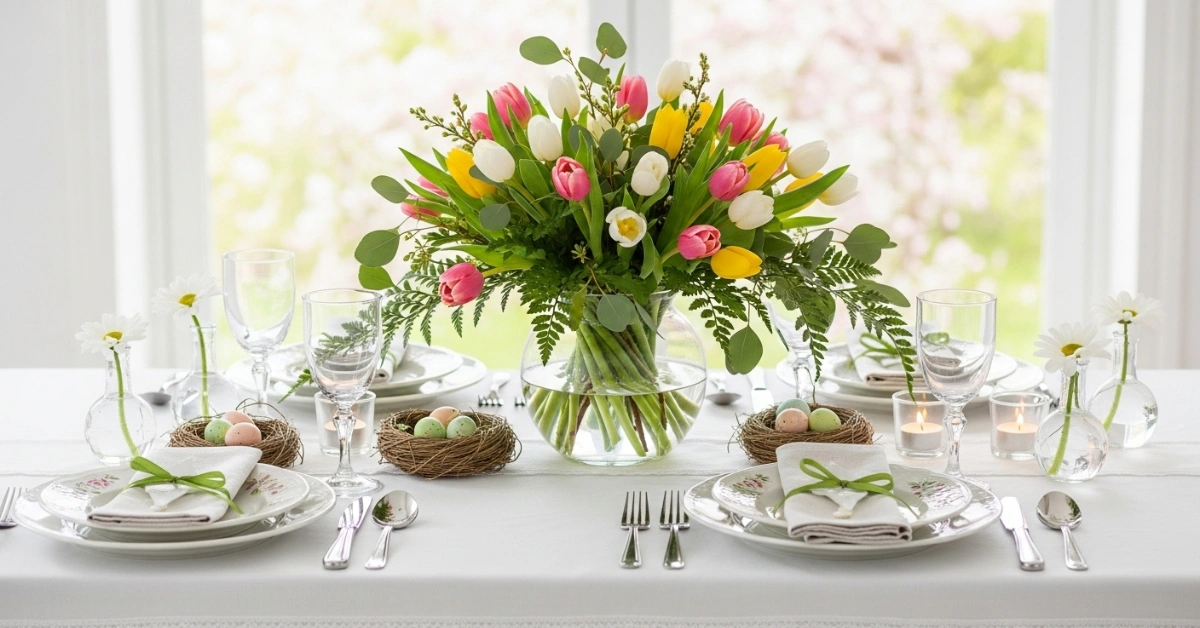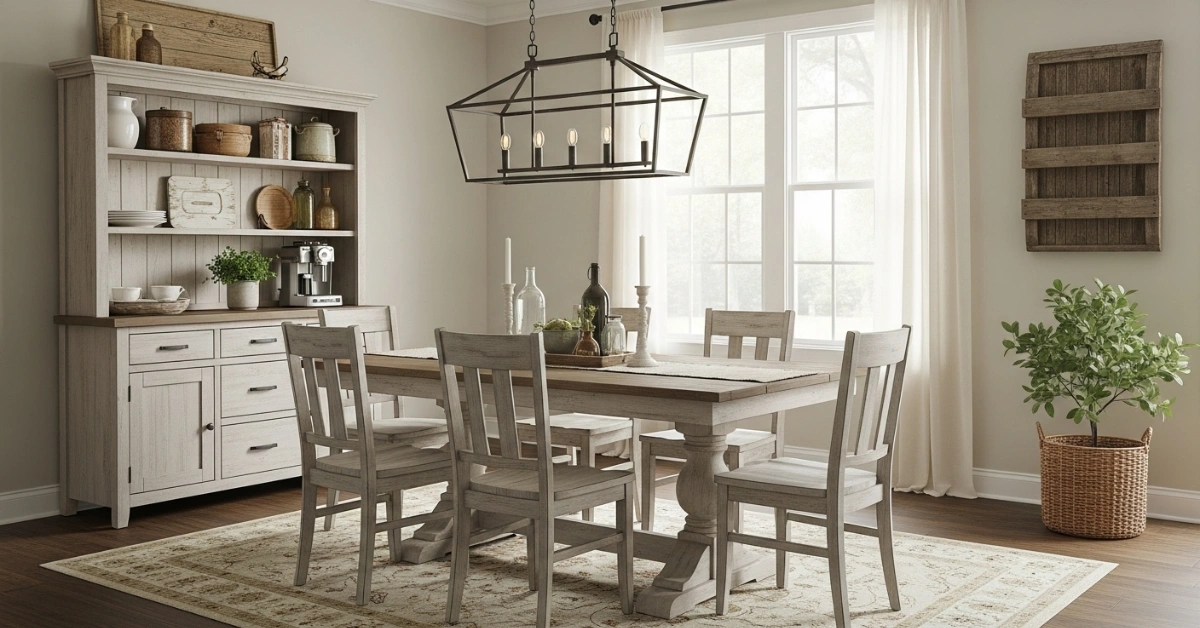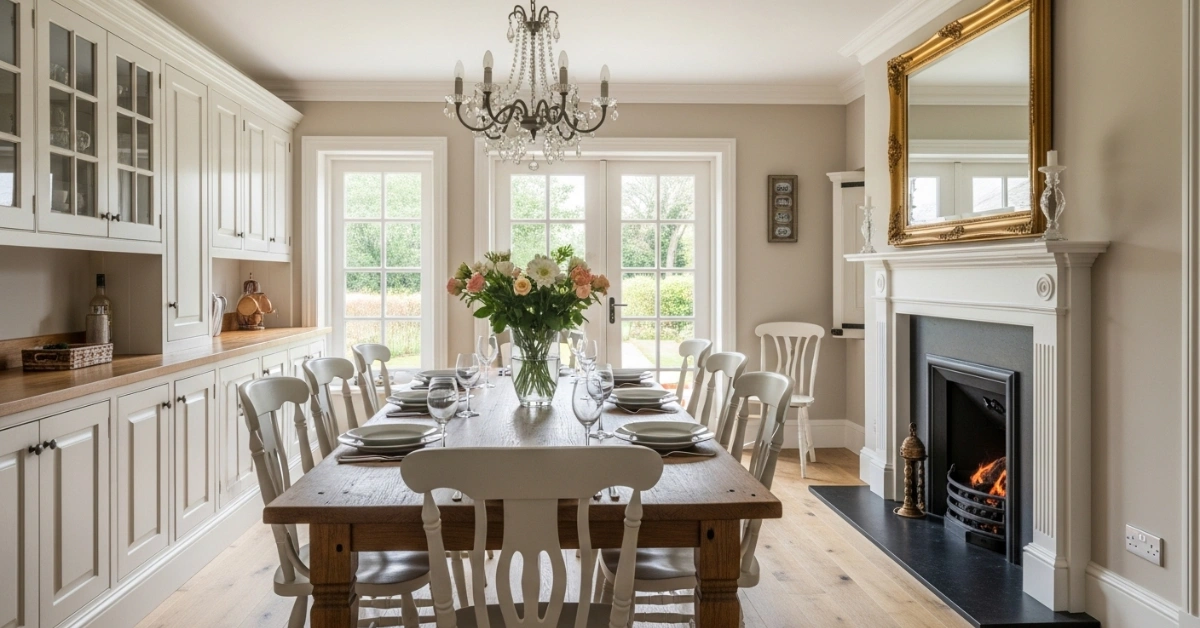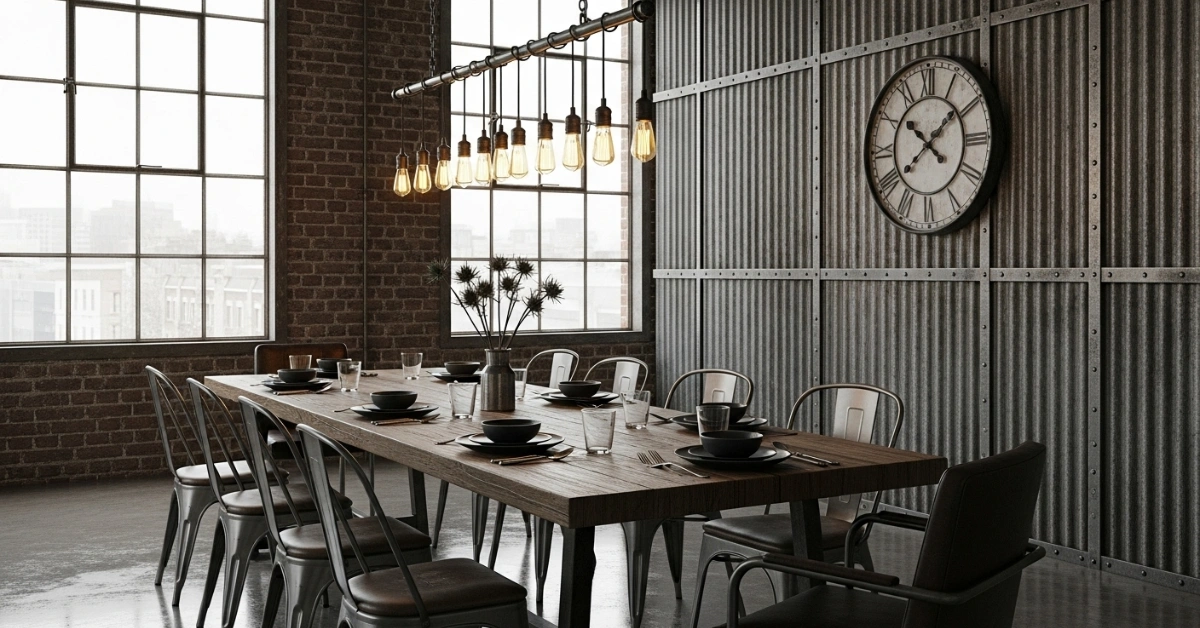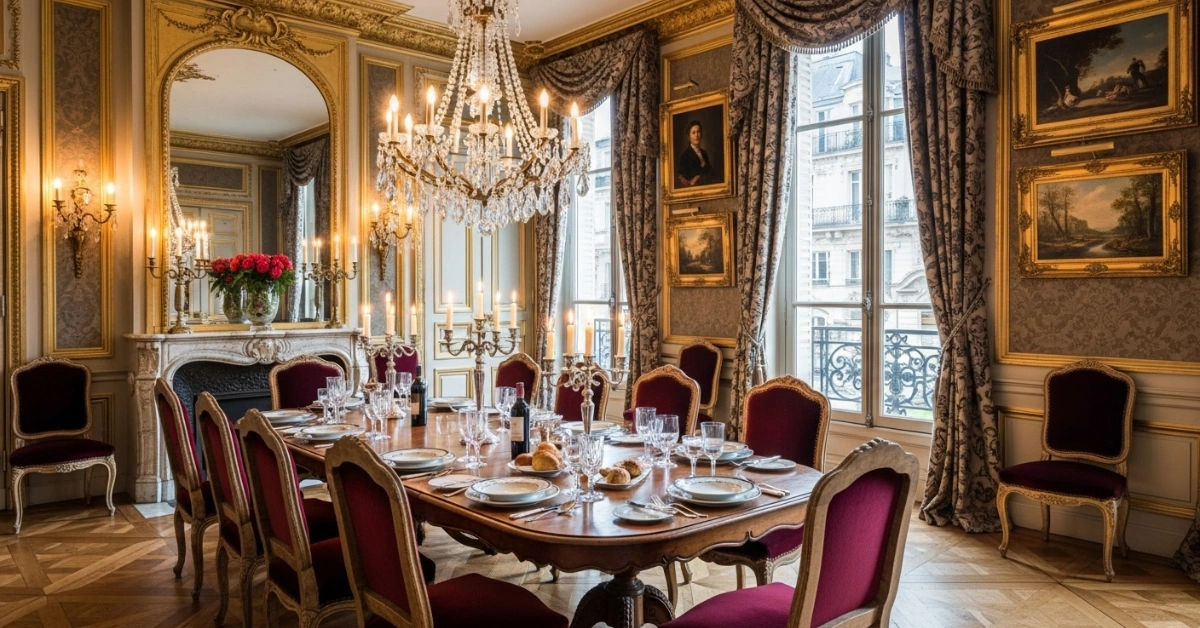23 Mid-Century Modern Dining Room Ideas for Timeless Style
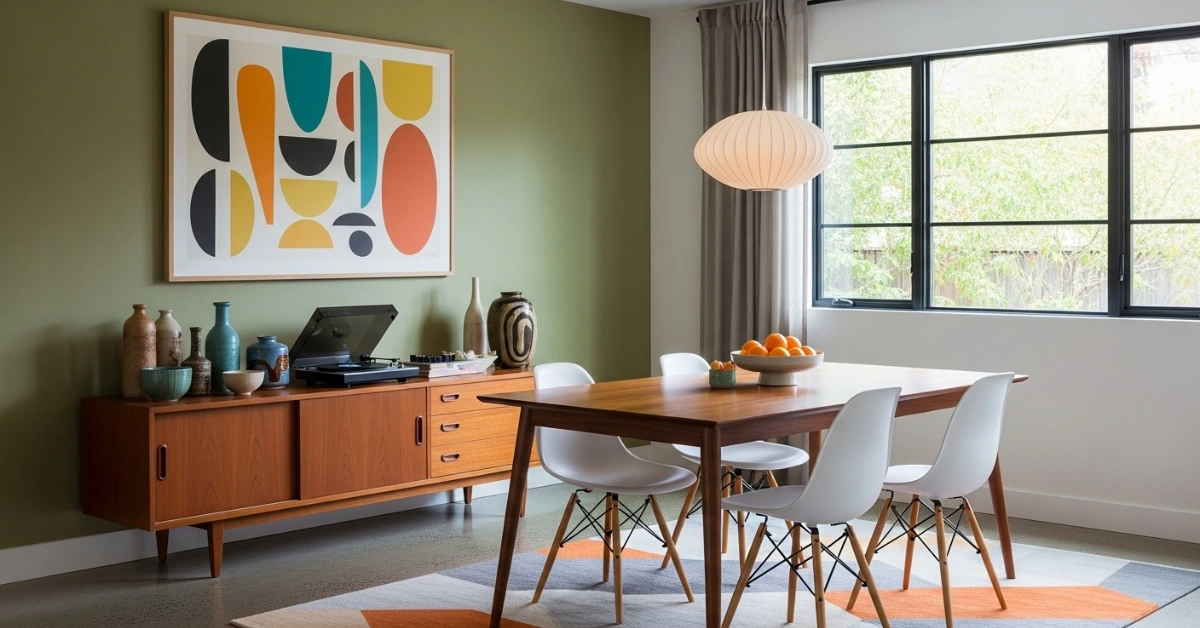
Designing a dining room that feels both stylish and timeless can be a challenge. Many homeowners struggle to balance aesthetics with functionality, often ending up with spaces that feel outdated or cluttered. The Mid-Century Modern dining room offers a solution, blending clean lines, organic shapes, and practical design to create a space that’s inviting and enduring. In this guide, we’ll explore how to craft a Mid-Century Modern dining room that reflects your personality while staying true to the style’s iconic roots, with actionable tips and inspiration to bring your vision to life.
This article dives deep into the essentials of Mid-Century Modern design, offering practical advice, expert insights, and creative ideas to help you transform your dining space. From furniture choices to color palettes, we’ll cover everything you need to create a dining room that’s both functional and beautiful.
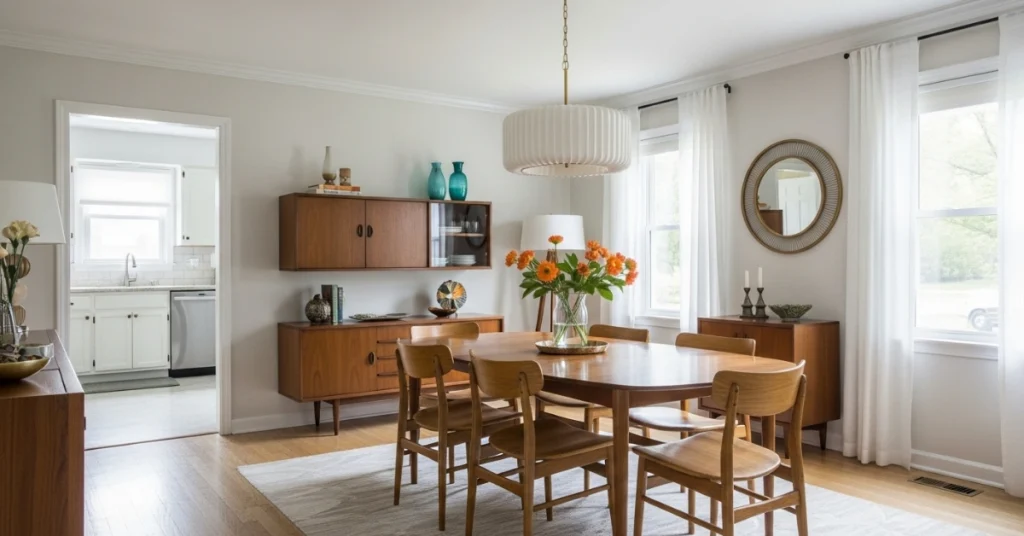
What Is Mid-Century Modern Design?
The History Behind the Style
Mid-Century Modern design emerged in the mid-20th century, roughly between the 1940s and 1960s. Rooted in post-World War II optimism, it emphasized simplicity, functionality, and a connection to nature. Architects and designers like Charles and Ray Eames, Eero Saarinen, and George Nelson pioneered this movement, creating furniture and spaces that prioritized form and function.
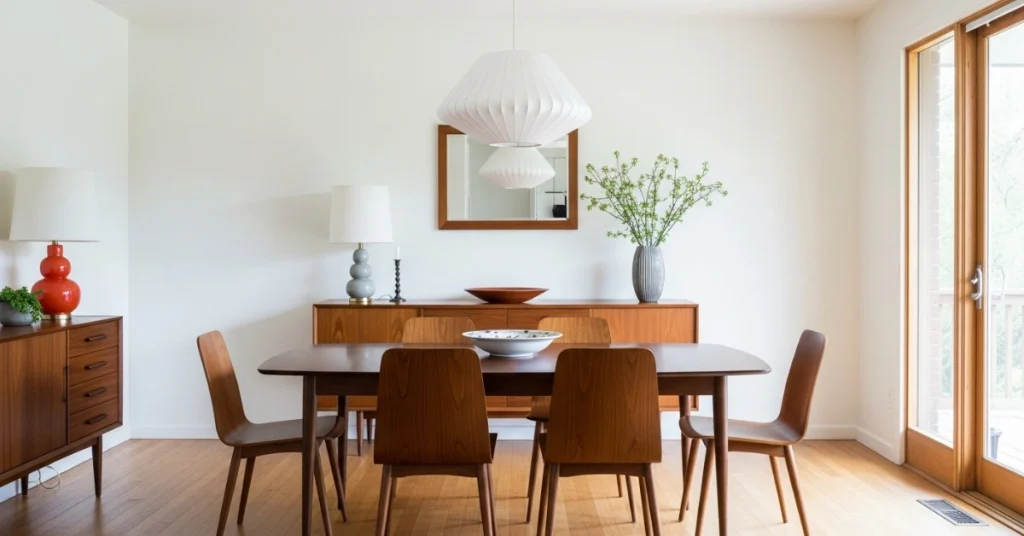
According to the Museum of Modern Art (MoMA), Mid-Century Modern design is characterized by “clean lines, organic curves, and a love for different materials” (MoMA, 2020). This style remains popular today because it feels both retro and fresh, making it perfect for a dining room that stands the test of time.
Key Characteristics of Mid-Century Modern
To create an authentic Mid-Century Modern dining room, you need to understand its defining elements:
- Clean Lines: Furniture features sleek, unadorned shapes without excessive ornamentation.
- Organic Shapes: Think curved chair backs or oval tables that mimic natural forms.
- Mixed Materials: Wood, metal, glass, and leather are often combined for contrast.
- Bold yet Balanced Colors: Neutral bases with pops of mustard, teal, or orange.
- Functionality: Every piece serves a purpose, blending style with practicality.
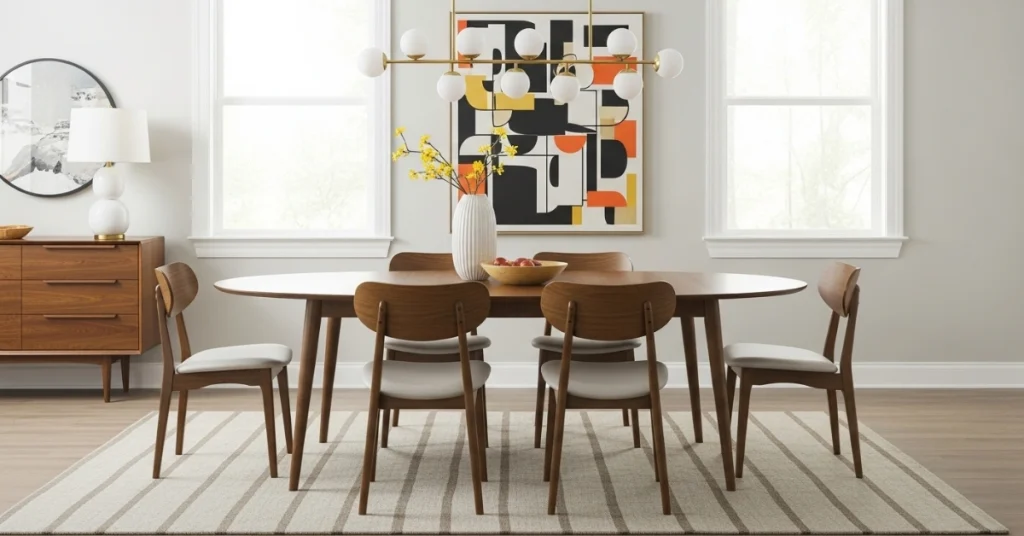
These principles guide every decision, from choosing a dining table to selecting decor, ensuring your space feels cohesive and true to the style.
Planning Your Mid-Century Modern Dining Room
Assess Your Space
Before diving into furniture or decor, evaluate your dining room’s layout. Measure the room’s dimensions to determine what size table and seating will fit comfortably. Consider natural light sources, as Mid-Century Modern design often emphasizes open, airy spaces. For smaller rooms, opt for compact furniture; for larger spaces, you can experiment with statement pieces like an oversized chandelier or a long dining table.
Tip: Leave at least 36 inches between the table and walls to allow for easy movement. This ensures your dining room feels spacious and functional.
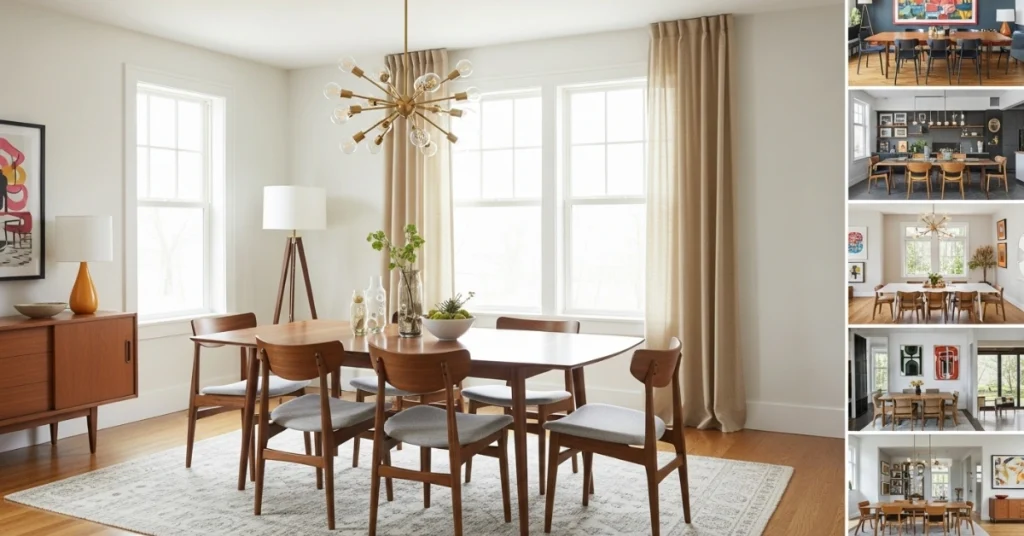
Set a Budget
Mid-Century Modern furniture can range from affordable reproductions to high-end originals. Decide how much you’re willing to spend on key pieces like the dining table and chairs. Reproductions from brands like West Elm or IKEA offer budget-friendly options, while vintage finds from marketplaces like 1stDibs can add authenticity (and a higher price tag).
Define Your Vision
Do you want a bold, retro-inspired dining room with vibrant colors, or a more subdued, Scandinavian-influenced space with neutral tones? Create a mood board with images of Mid-Century Modern dining rooms to clarify your aesthetic. Pinterest and Instagram are great places to find inspiration.
Choosing the Perfect Dining Table
Shape and Size
The dining table is the centerpiece of your Mid-Century Modern dining room. Popular shapes include:
- Oval: Softens the room’s look and maximizes seating.
- Rectangular: Ideal for larger spaces, offering a classic silhouette.
- Round: Perfect for small rooms, encouraging intimate gatherings.
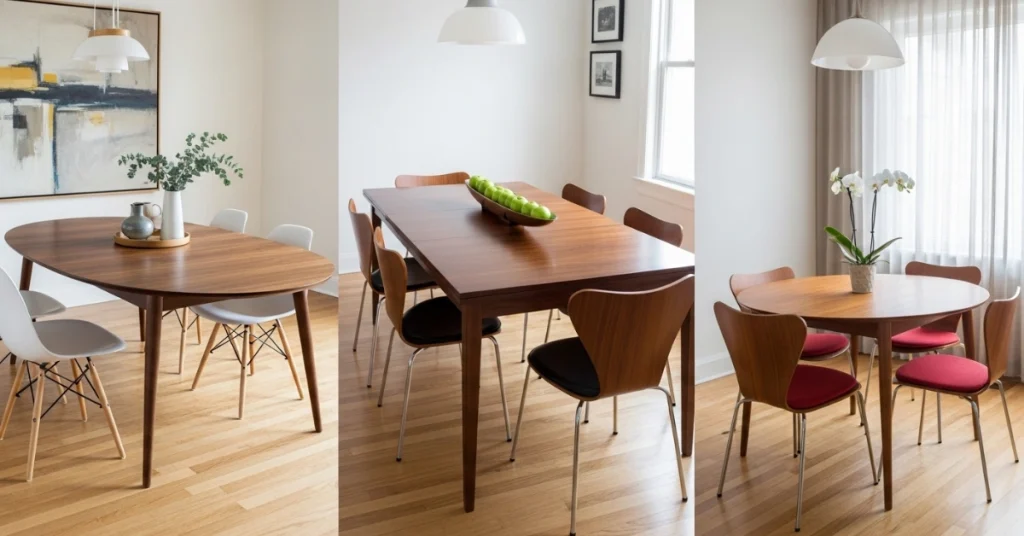
For a family of four, a table around 60–72 inches long works well. For larger groups, consider an extendable table, a common feature in Mid-Century designs for versatility.
Materials and Finishes
Wood is the go-to material, with walnut and teak being iconic choices for their warm, rich tones. Look for tables with tapered legs, a hallmark of the style. For a modern twist, consider a glass-top table with wooden or metal legs, which adds lightness to the space.
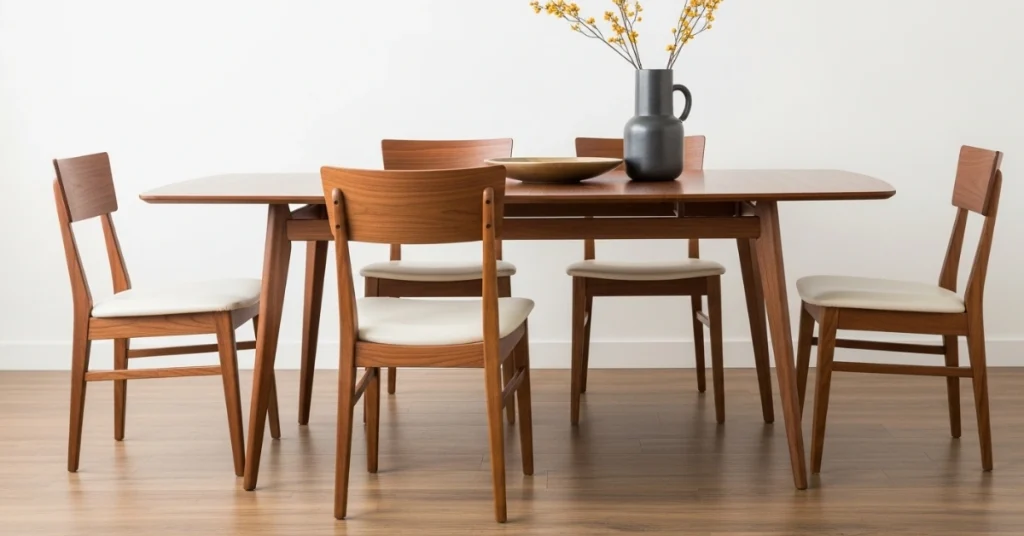
Designer Insight: “A walnut dining table with clean lines anchors the room while adding warmth,” says Sarah Johnson, an interior designer specializing in Mid-Century Modern spaces. “Pair it with a sleek base to keep the look airy.”
Selecting Mid-Century Modern Dining Chairs
Iconic Designs
Mid-Century Modern dining chairs are known for their sculptural shapes and comfort. Iconic options include:
- Eames Molded Chair: With its curved plywood or fiberglass seat, it’s both stylish and ergonomic.
- Wishbone Chair: Designed by Hans Wegner, its organic curves add elegance.
- Saarinen Tulip Chair: Its single pedestal base creates a futuristic look.
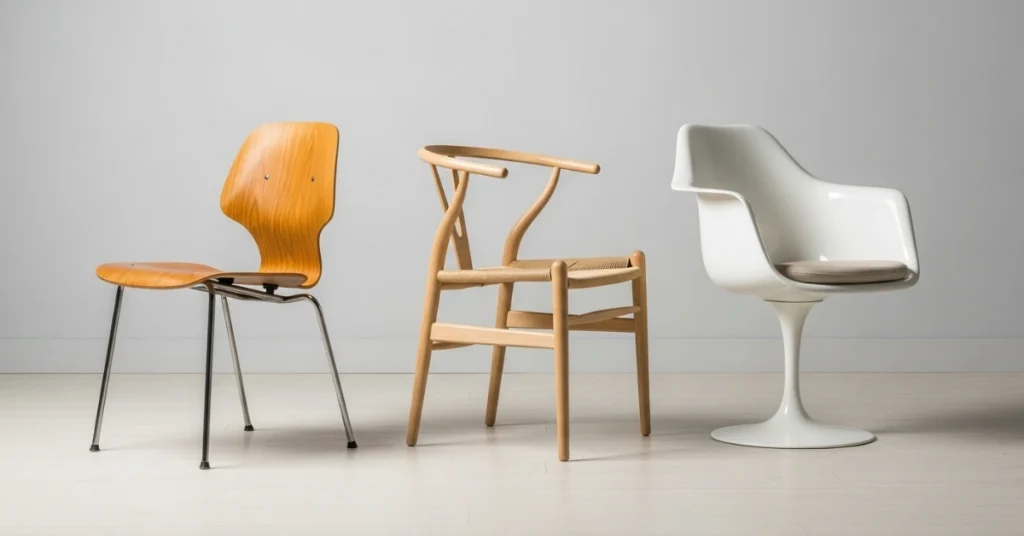
Mixing chair styles, such as pairing Eames chairs with a single Wishbone at the head, adds personality while staying true to the eclectic nature of the style.
Upholstery and Fabrics
Choose chairs with neutral upholstery (like gray or beige wool) for versatility, or add a pop of color with mustard yellow or olive green. Leather is another authentic choice, offering durability and a luxurious feel. Ensure the fabric complements the table’s finish for a cohesive look.
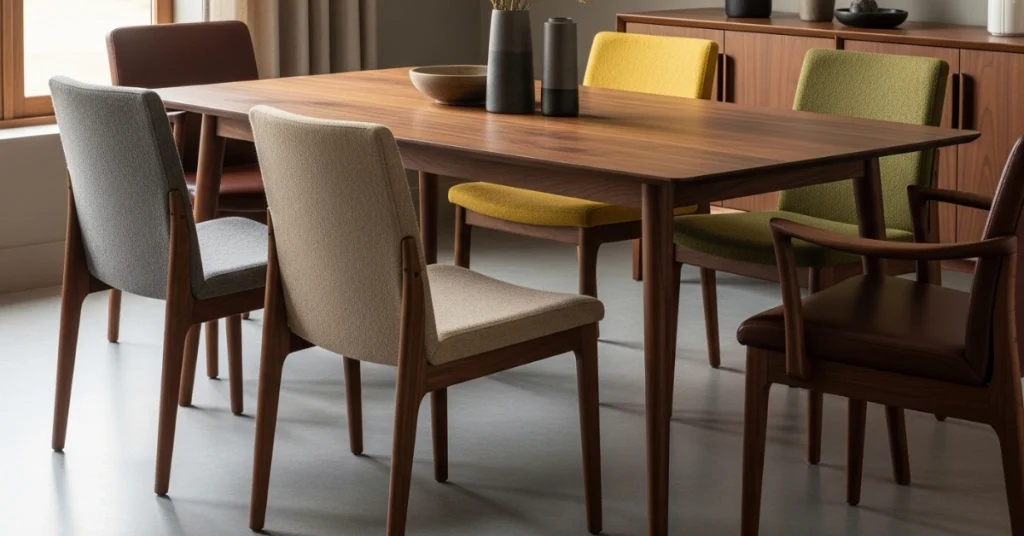
Pro Tip: If your budget allows, invest in one or two high-quality chairs as statement pieces and fill out the set with affordable reproductions.
Lighting: Setting the Mood
Statement Chandeliers
A bold chandelier is a Mid-Century Modern staple. Look for designs with geometric shapes, like the Sputnik chandelier with its starburst form or the Arco floor lamp for a dramatic effect. Materials like brass, chrome, or frosted glass enhance the retro vibe.
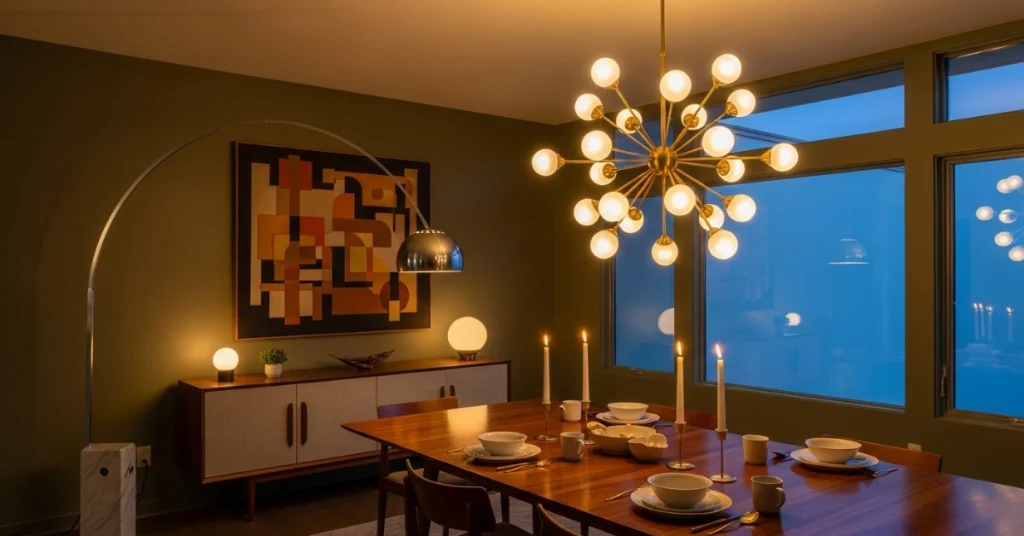
Example: In my own dining room, I installed a brass Sputnik chandelier above a walnut table. The warm glow creates a cozy atmosphere while highlighting the table’s grain.
Wall and Table Lighting
Complement your chandelier with wall sconces or a table lamp on a sideboard. Opt for simple designs with clean lines, such as cone-shaped sconces or ceramic table lamps. Dimmer switches are a must for adjusting the ambiance during dinners or gatherings.
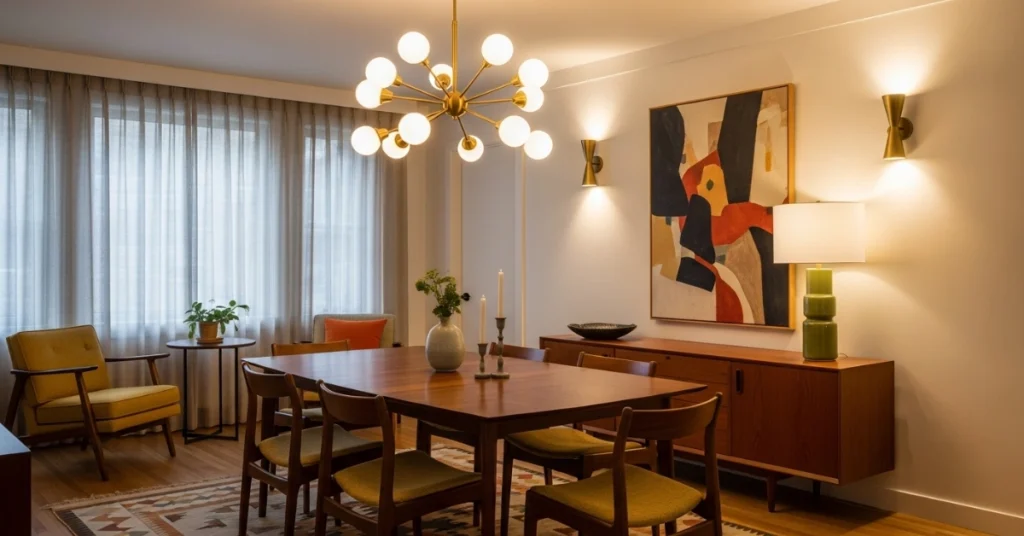
Color Palette and Textures
Choosing Colors
A Mid-Century Modern dining room typically features a neutral base (white, gray, or beige walls) with bold accent colors. Popular choices include:
- Mustard Yellow: Adds warmth and vibrancy.
- Teal or Turquoise: Evokes retro charm.
- Burnt Orange: Brings energy without overwhelming.
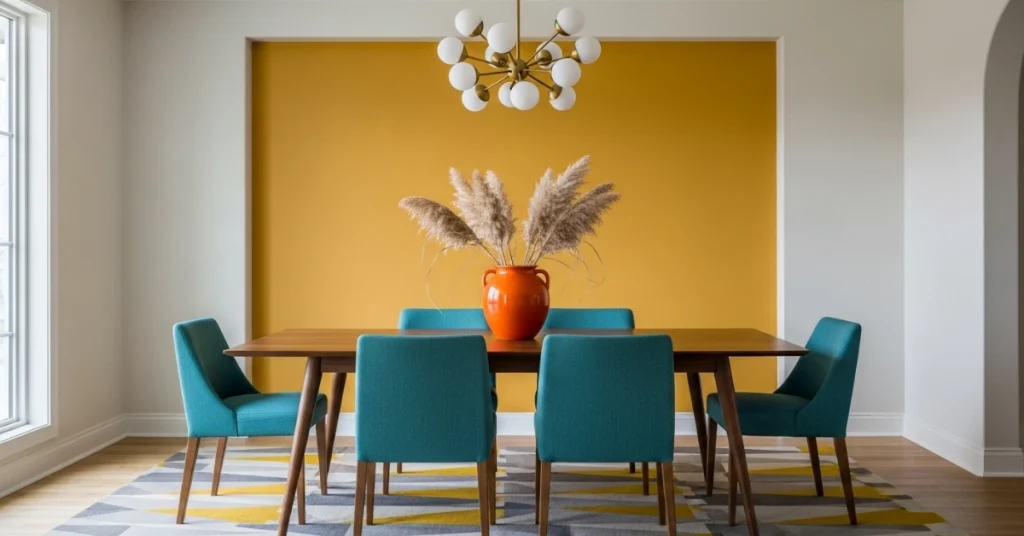
Use accent colors in small doses, such as chair upholstery, a rug, or wall art, to avoid overpowering the space.
Incorporating Textures
Textures add depth to the room. Consider:
- Wood: For furniture and flooring, like oak or walnut.
- Wool or Cotton: In rugs or upholstery for softness.
- Metal Accents: In lighting or table legs for contrast.
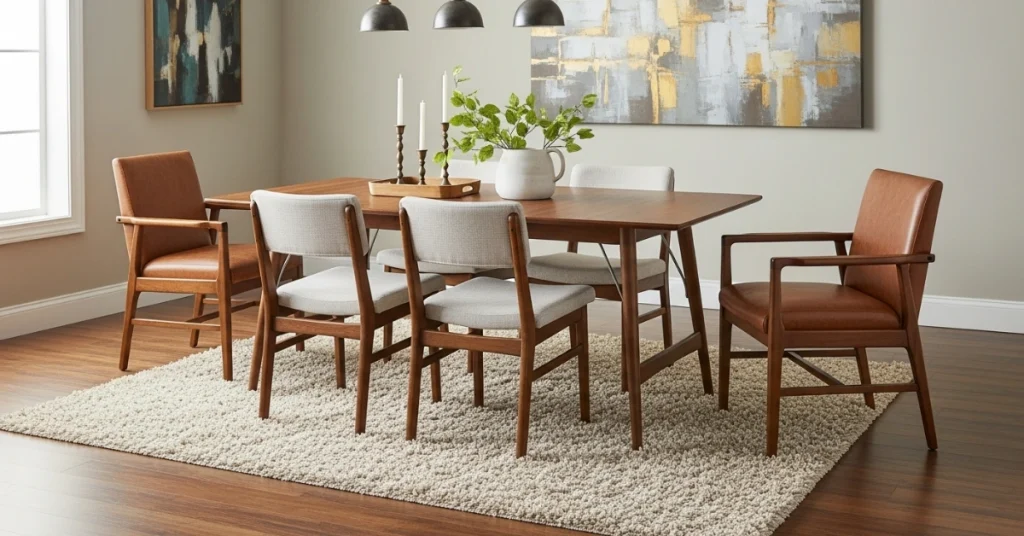
A shag rug under the dining table can add warmth, while a leather chair introduces sophistication. Balance textures to keep the space inviting without feeling cluttered.
Decor and Accessories
Wall Art and Mirrors
Mid-Century Modern dining rooms benefit from bold yet simple decor. Hang abstract art with geometric shapes or a large round mirror to reflect light and make the room feel larger. Black-and-white photography, inspired by the era’s aesthetic, also works well.
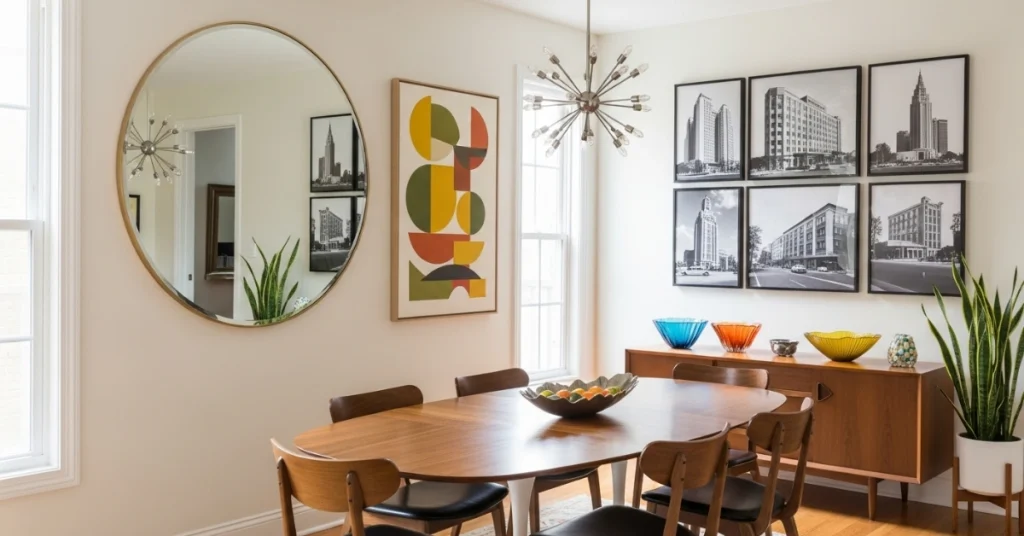
Designer Tip: “A single oversized piece of art can transform a dining room,” says designer Mark Evans. “Choose a print with bold lines or colors to draw the eye.”
Centerpieces and Tableware
Keep table decor minimal to maintain the style’s clean aesthetic. A low ceramic vase with greenery, a wooden bowl, or a set of sculptural candlesticks makes an elegant centerpiece. For tableware, opt for simple white plates or pieces with subtle retro patterns.
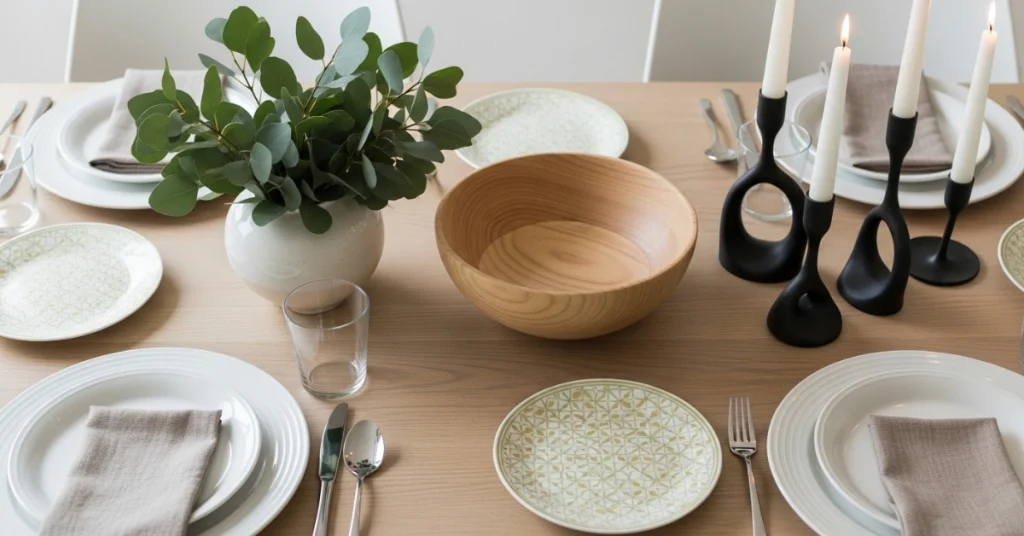
Layout and Space Optimization
Arranging Furniture
Place the dining table centrally, with enough space for chairs to be pulled out comfortably. If your room is small, consider a round or oval table to save space. A sideboard along one wall provides storage and a surface for decor, maintaining the room’s functionality.
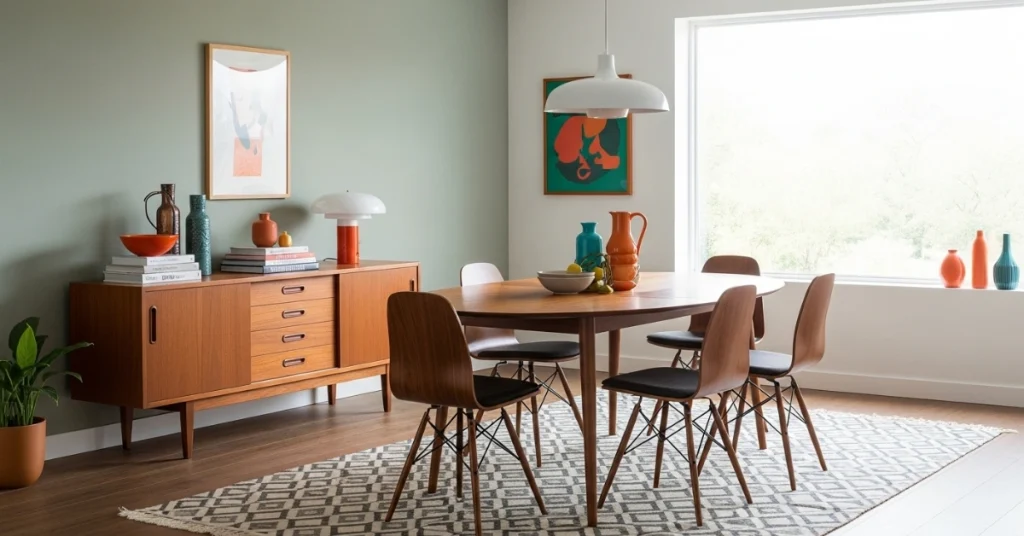
Open-Plan Considerations
Many modern homes feature open-plan layouts, where the dining room flows into the kitchen or living area. Use a large area rug to define the dining space, ensuring it complements the color scheme. A low-back bench or open shelving can act as a subtle divider without closing off the space.
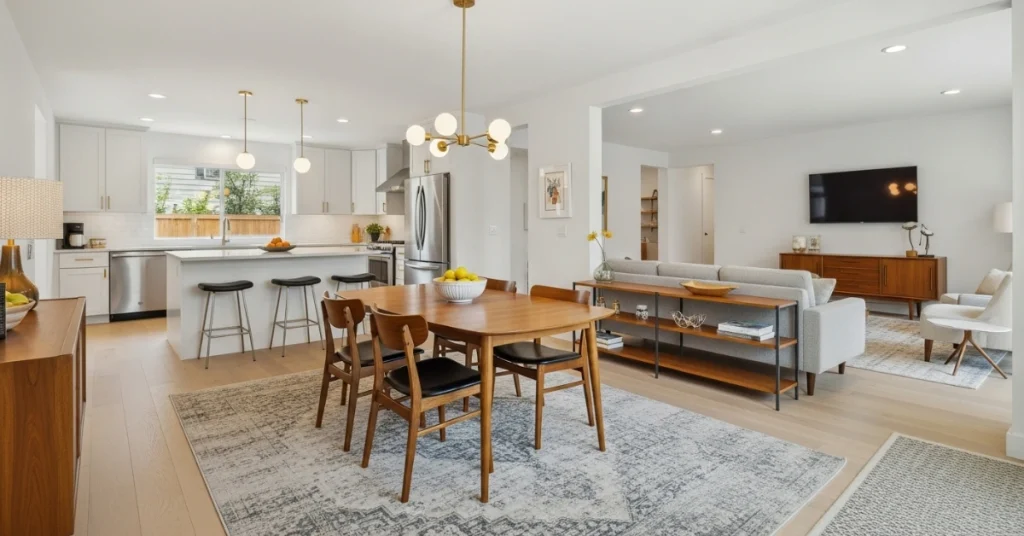
Real-World Example: In a client’s open-plan home, we used a teal area rug under the dining table to create a distinct zone. The rug’s color echoed the chair upholstery, tying the space together seamlessly.
Mixing Mid-Century Modern with Other Styles
Scandinavian Influence
Mid-Century Modern shares roots with Scandinavian design, emphasizing simplicity and natural materials. Pair a teak dining table with minimalist white chairs for a Nordic-inspired look. Add a sheepskin throw for extra coziness.
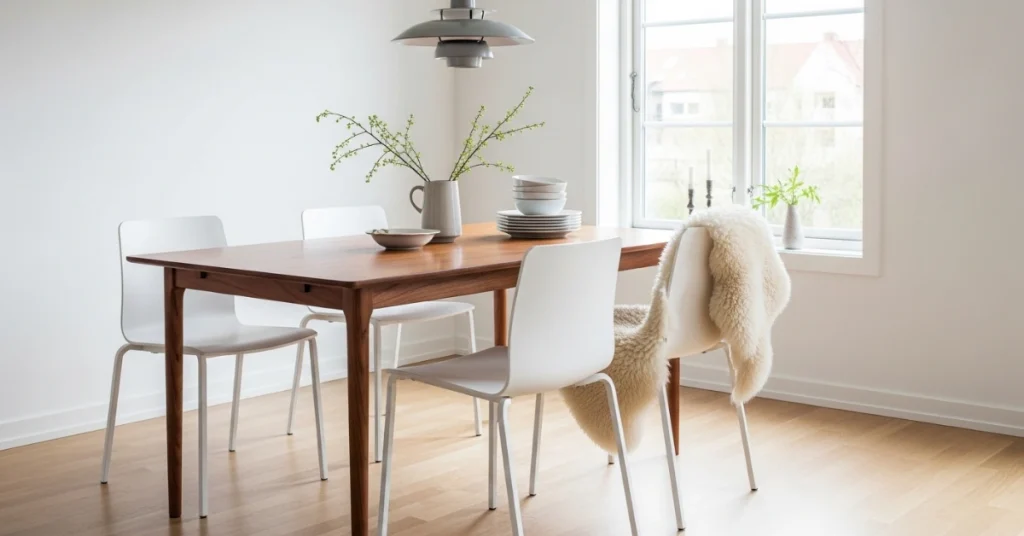
Boho Chic
For a bohemian twist, incorporate woven textures, like a rattan chair or macramé wall hanging. Earthy tones like terracotta or sage green blend well with Mid-Century Modern’s palette.
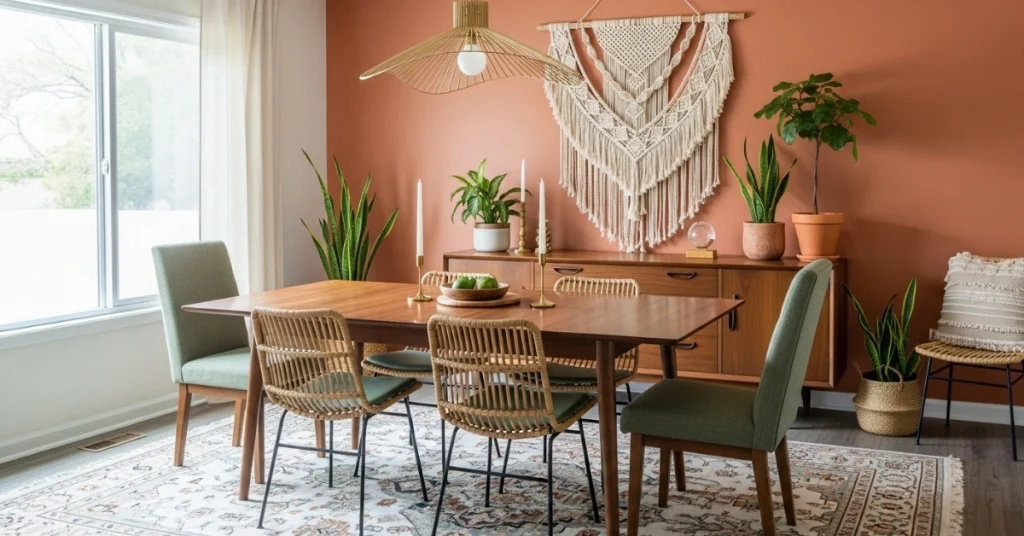
Contemporary Fusion
Blend Mid-Century Modern with contemporary elements by adding sleek, modern lighting or metallic accents. A glass dining table with wooden chairs bridges the two styles effortlessly.
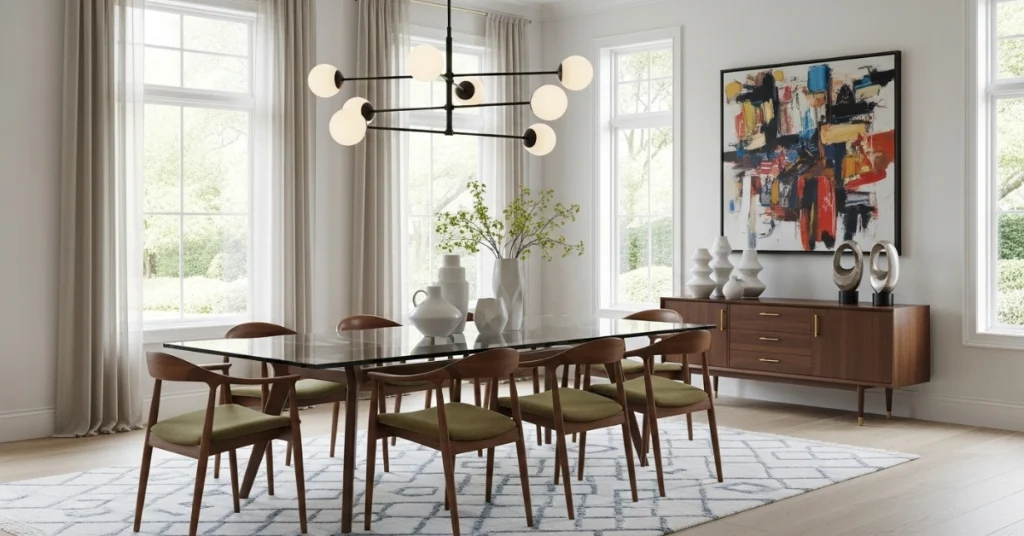
Practical Tips for Maintenance
Caring for Wood Furniture
Wooden tables and chairs require regular care to maintain their beauty. Dust weekly with a soft cloth and use a wood polish every few months. Avoid placing hot or wet items directly on the surface to prevent damage.
Cleaning Upholstery
For fabric chairs, vacuum regularly to remove dust. Spot-clean stains with a mild detergent, and consider professional cleaning for leather upholstery to preserve its finish.
Preserving the Look
To keep your Mid-Century Modern dining room timeless, avoid trendy decor that may date the space. Stick to classic pieces and update accents like cushions or artwork periodically to refresh the look.
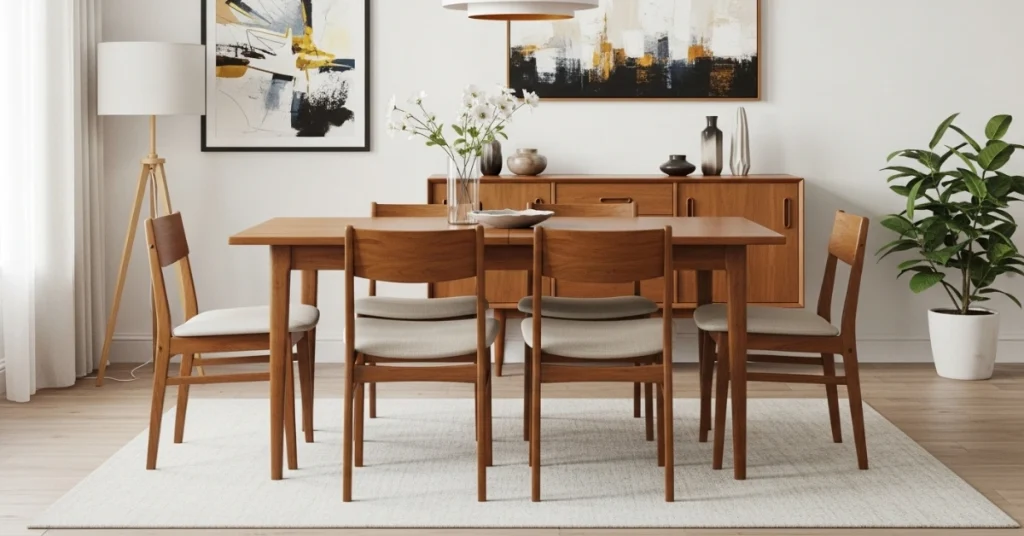
Budget-Friendly Mid-Century Modern Ideas
Creating a Mid-Century Modern dining room doesn’t have to break the bank. Here are some cost-saving tips:
- Shop Secondhand: Check thrift stores or online marketplaces like eBay for vintage pieces.
- DIY Projects: Refinish an old wooden table with a walnut stain to mimic high-end designs.
- Mix High and Low: Pair a statement chandelier with affordable chairs from retailers like Target.
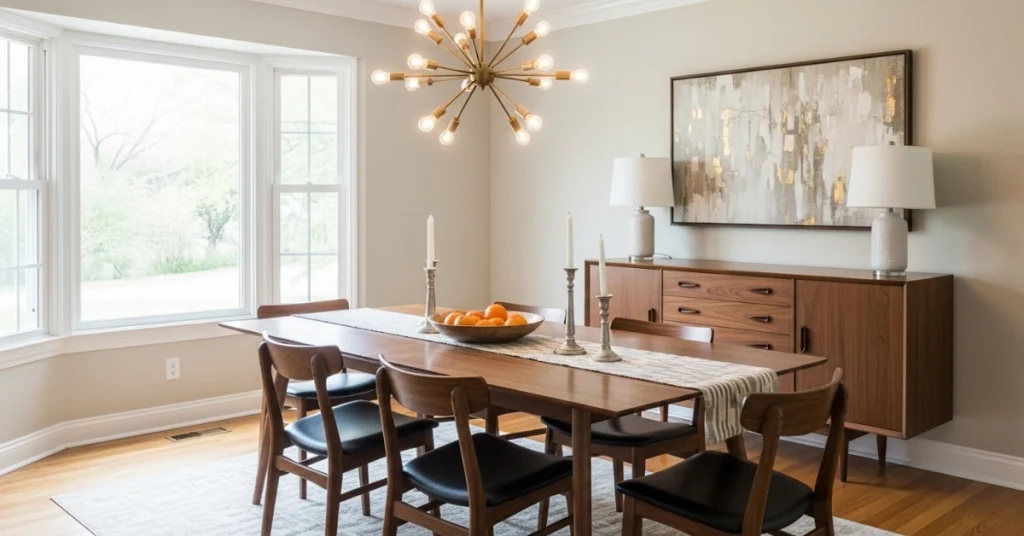
Example: A friend transformed her dining room by scoring a set of Eames-style chairs at a flea market for $50 each. With a fresh coat of paint on the walls, the space felt brand new.
Common Mistakes to Avoid
- Overcrowding the Space: Too many furniture pieces can make the room feel cramped. Stick to essentials like a table, chairs, and a sideboard.
- Ignoring Proportions: A table that’s too large or small disrupts the room’s balance. Measure carefully before buying.
- Overusing Bold Colors: Limit accent colors to one or two to maintain harmony.
- Neglecting Lighting: Poor lighting can make the space feel flat. Invest in a statement light fixture to elevate the design.
Inspiration: Real-Life Mid-Century Modern Dining Rooms
To spark your creativity, here are three examples of stunning Mid-Century Modern dining rooms:
- The Retro Haven: A walnut oval table paired with mustard yellow Eames chairs, lit by a brass Sputnik chandelier. A large abstract painting adds a focal point.
- The Minimalist Retreat: A round teak table with white Tulip chairs, set against a gray accent wall. A simple ceramic vase with eucalyptus branches completes the look.
- The Eclectic Mix: A rectangular glass table with mismatched chairs (Wishbone and Eames) and a shag rug for texture. Teal cushions add a pop of color.
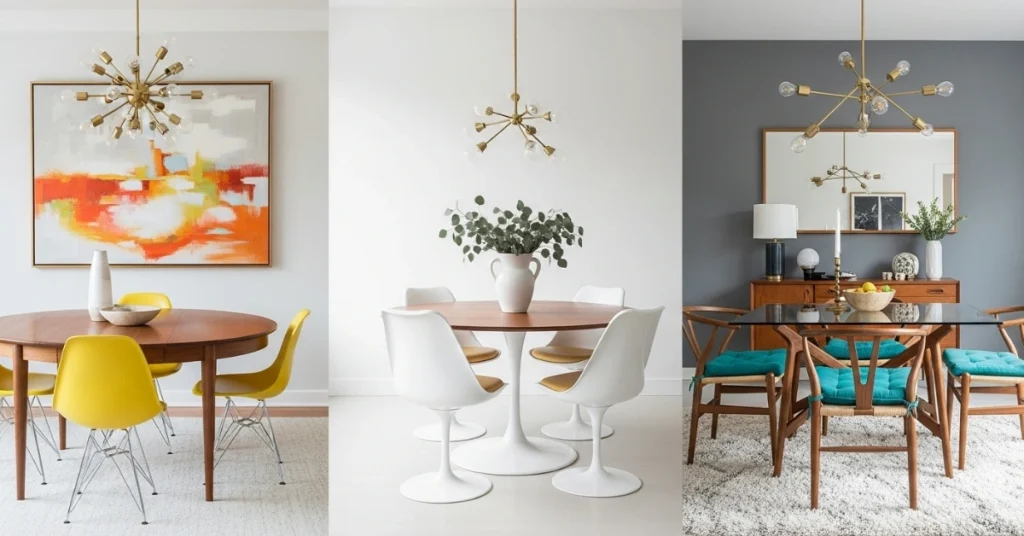
Browse sites like Dwell or Architectural Digest for more real-world inspiration, or visit local vintage stores to find unique pieces.
Conclusion: Crafting Your Dream Mid-Century Modern Dining Room
A Mid-Century Modern dining room is more than just a place to eat, it’s a space where style, comfort, and functionality come together. By focusing on clean lines, organic shapes, and a balanced color palette, you can create a dining area that feels both timeless and personal. Whether you’re starting from scratch or updating an existing space, the tips and ideas in this guide will help you design a dining room that inspires and delights for years to come.
Ready to transform your dining room? Start by selecting one statement piece a table, chandelier, or set of chairs—and build your design around it. Share your progress in the comments or explore our recommended retailers for authentic Mid-Century Modern furniture. Your dream dining room is just a few steps away!

